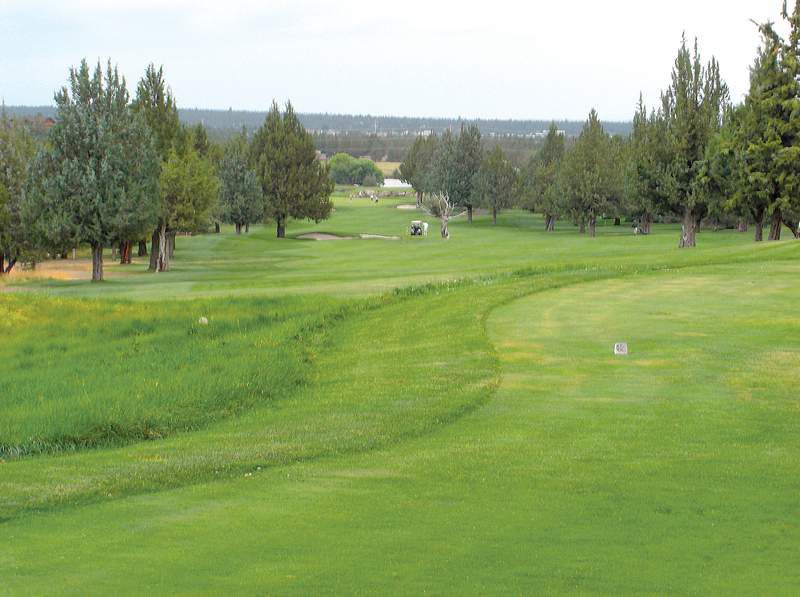Eagle Crest: Resort course
Published 5:00 am Wednesday, August 13, 2008

- The 504-yard par-5 15th hole at Eagle Crest’s Resort course features a tree in the middle of the fairway.
REDMOND — The wide-open first hole at Eagle Crest’s Resort course can lull a golfer into believing the rest of the course is just as generous.
Those golfers would be wrong.
Trending
The 22-year-old Resort course, the oldest of the three tracks at Eagle Crest, for the most part is a position golf course, with tight fairways and small greens.
The course is a departure from Eagle Crest’s Ridge course, a wide-open bomber’s paradise that rewards aggressive golf.
At the Resort course, hitting driver off the tee often comes with risks, including juniper trees and a wealth of opportunities to hit the ball out of bounds with shots that aren’t THAT bad.
“It’s a golf course that you can score well on, but the minute you try to bite off too much it will hammer you,” says Ron Buerger, Eagle Crest’s director of golf. “It’s really the type of golf course that puts a premium on accuracy. In a lot of ways it’s similar to an old country-club-style course.”
The Resort course isn’t a walk in the woods on every hole.
In fact, many of the holes feel as if they were designed by an architect other than Gene “Bunny” Mason, who also designed Awbrey Glen Golf Club in Bend and Black Butte Ranch’s Glaze Meadow course.
Trending
Golfers who enjoy position golf will have an opportunity to show off their skills at Eagle Crest’s Resort course. Others who may prefer to rip a driver will get their chance, too, particularly on the front nine.
“There is a lot of variety on the golf course,” Buerger says. “There are some holes that are very tight, some that are very forgiving, and some holes that are very scenic. There is a little bit of everything.”
The 369-yard first hole is among the easiest holes on the course. Some minor trouble exists on the left in the form of trees and houses — but the right side is friendlier than Mister Rogers. And that is a comforting sight for most slice-prone recreational golfers.
But the comfort is quickly dashed at first sight of the 481-yard, par-5 second hole.
The extremely narrow fairway rests at the bottom of a small, juniper-lined canyon, and it takes a sharp right turn toward the green about 350 yards away from the tee box.
A perfect drive places a golfer about 200 yards away from the putting surface, but the route to the green could be blocked by a perfectly placed juniper, leaving golfers few options other than to lay up about 100 yards away.
“And then that little shot is no picnic,” Buerger says of the approach into the small green with a bunker and deep rough right of the putting surface.
“No. 2 has always been a crowd favorite,” Buerger adds. “I don’t think you are going to find too many golf pros that are going to like that hole. But it’s one of those holes that is extremely popular for our patrons.”
The back nine offers more tight fairways and target golf.
The 504-yard, par-5 15th hole presents another nervous tee shot. A juniper and a fairway bunker rest in the middle of the tightening fairway about 250 yards from the tee box, preventing aggressive golfers from going for the green in two shots.
But the course again opens up for the last three holes.
The 17th, a 388-yard par 4, features lakes on the right and left of the fairway. Bigger hitters can take driver and leave an easy shot to the green. But doing so brings water on the right and two large fairway bunkers into play, and a shot hit on the screws can bring the water on the left into play.
“Everybody seems to like the water holes,” Buerger says.
The greens for the most part do a good job of holding approach shots — which is mandatory to play target golf.
From the blue tees, the par 3s look and feel different from one another. But No. 7 (202 yards), No. 12 (204 yards), and No. 16 (204 yards) all play to similar distances and, depending on wind, could all be played with the same club.
But the par 4s, which range in distance from the trouble-filled, 334-yard 14th hole to the 436-yard fifth and 13th holes, offer greater variety.
And the par 5s can be enjoyable — or punitive — depending how golfers choose to play them.
“You find out real quick just how confident you are with a driver in your hand,” Buerger says of the Eagle Crest Resort track. “It’s a sleeper. Since we’ve added so many golf courses, it’s often the forgotten golf course in Central Oregon. I think over the years it’s just gotten better and better.”
Be the ball
In the Tee to Green tip of the week, Kah-Nee-Ta golf pro Ryan Davis, above, gives pointers on putting while keeping the eyes closed, see Page C8








